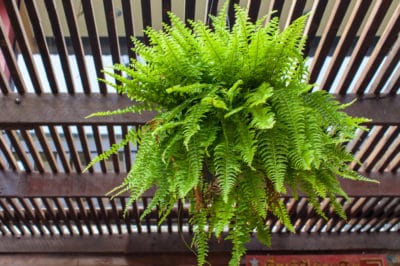Choosing the Right Water
Houseplants and those in outdoor containers will be more sensitive to water problems like chemicals and temperature. For these plants:
- Use room temperature water.
- Collect rainwater or use distilled water.
- Avoid tap water, which can be high in chlorine or fluoride.
- Don’t use water that has been treated with commercial water softeners.
Watering Newly Propagated Plants
A newly transplanted or propagated Boston fern needs some pampering when it comes to water. The plant and its roots will suffer some degree of transplant shock. Water just enough to keep the soil a little moist. Provide extra humidity by misting, growing in a mini-greenhouse or covering plant and pot with a plastic bag for a week; remove the bag twice a day.
Boston Ferns in Containers
Container-grown plants always need more careful management than plants in the ground. The type of container also matters – an unglazed clay pot loses water through evaporation. Plastic and glazed clay pots hold water. Water the plant until water runs out the drainage holes. Don’t leave water standing in the basin and don’t water again until the soil surface feels dry.
Boston Ferns in Hanging Baskets
The typical hanging basket has a metal framework lined with several layers of sphagnum moss. Potting soil is placed on top of the moss and the fern is planted into the soil. The design of the basket means that water is easily evaporated through the moss. In addition, these baskets may be more subject to drying breezes. Most need daily watering; in hot weather, it may be twice daily.
Flushing Boston Ferns
Boston ferns in containers are subject to salt build-up from fertilizer and minerals in the water. The leaves turn brown and white deposits appear on the potting soil. These salts can eventually kill the plant. Flush the plants every month or two. Plug the drainage holes and pour room temperature distilled water into the pot until it’s full. Remove the plugs and let water drain completely.
Watering Outdoor Boston Ferns
When grown outdoors, Boston ferns in containers need the same water as houseplants. When planted in the ground, you have more leeway. In most cases, watering when the soil is dry an inch or two below the surface is sufficient. In hot or windy weather, water more frequently.
